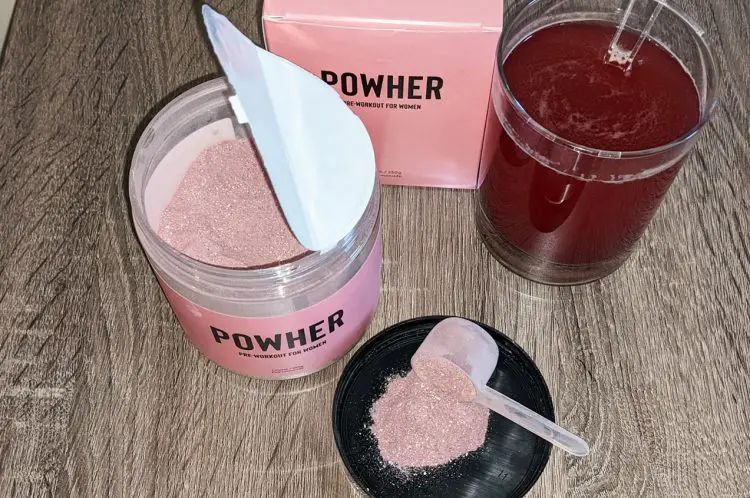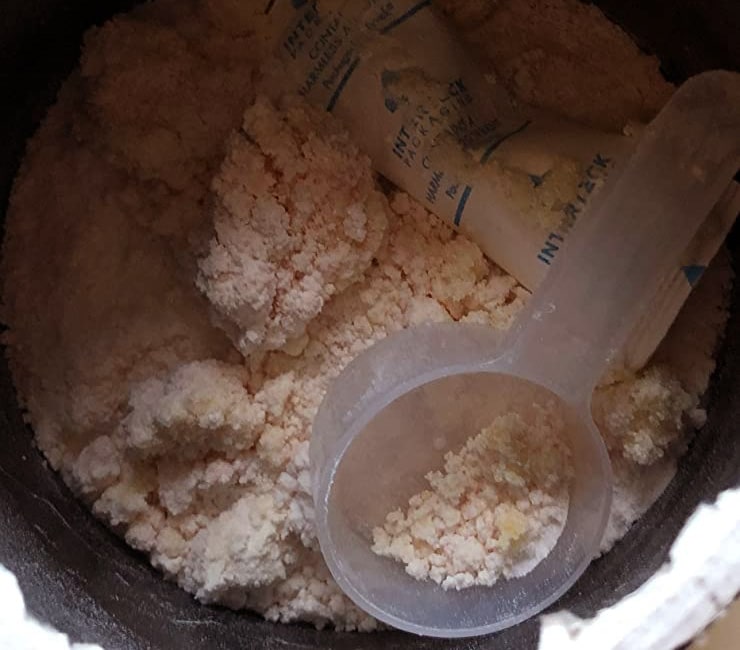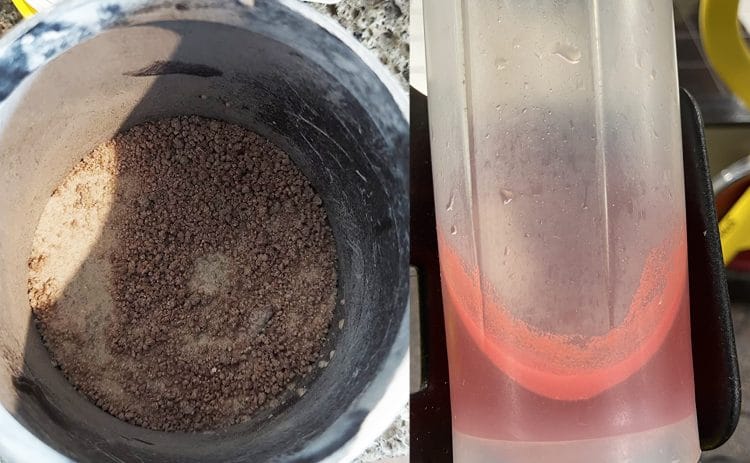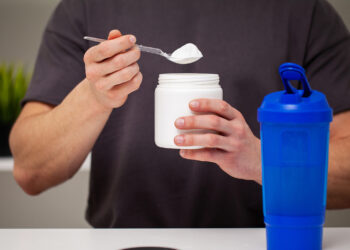So you’ve had that particular tub of pre-workout supplement sitting in your cabinet or closet for a long time and you’re not sure it’s good.
Maybe you’ve been out of the gym for a few months recovering from an injury, or you forgot you bought that particular tub and now it’s been a while since you first opened it.
When you check the label, you see that it’s getting close to the expiration date and you just don’t know whether or not you should take it or toss it.
You’ve come to the right place to find out for sure!
In this post, we’re going to look at what happens when a pre-workout supplement hits its expiration date, how to tell if the pre-workout is off or still good, and what to do when your pre-workout gets clumpy.
By the end of this page, you’ll know exactly whether or not that particular tub of pre-workout is safe for you to use!
Level Up Your Fitness: Join our 💪 strong community in Fitness Volt Newsletter. Get daily inspiration, expert-backed workouts, nutrition tips, the latest in strength sports, and the support you need to reach your goals. Subscribe for free!
Understanding Expiration Dates on Workout Supplements
Most of the people asking, “Does pre workout go bad?” are looking at the label and seeing that their tub is past its expiration date. They’re worried—and rightly so—that taking a supplement past its expiration date could mean they’re ingesting something harmful, spoiled, or ineffective.
Well, it’s important to understand what expiration dates are all about.
Most products have the “Best if Used By” on the label. However, this date is indicative of the optimal QUALITY, not necessarily safety.
Yes, you read that right. The food will be “best” if used by that date, meaning it will be the best quality possible. That date has nothing to do with how safe it is for consumption.
These “Best by” dates aren’t based on an exact science, as the FDA freely admits: “Manufacturers generally apply date labels at their own discretion and for a variety of reasons. The most common is to inform consumers and retailers of the date up to which they can expect the food to retain its desired quality and flavor.”
But that is just for food products. The FDA doesn’t regulate supplements—not just vitamin and mineral supplements, but also workout supplements including pre-workout. They don’t require this “Best if Used by” date on the label. In fact, they argued against it at length, stating that it is “unscientific and irresponsible” because every workout supplement is manufactured differently.
If a workout supplement includes a “Best By” date, what it typically means is that the supplement is still at its optimal potency before that date. The date isn’t an indication of the product’s safety.
The Hard Truth: All Food Spoils
Just because a product doesn’t have a “Best By” date, that doesn’t mean the supplement won’t spoil.
On the contrary: ALL food spoils.
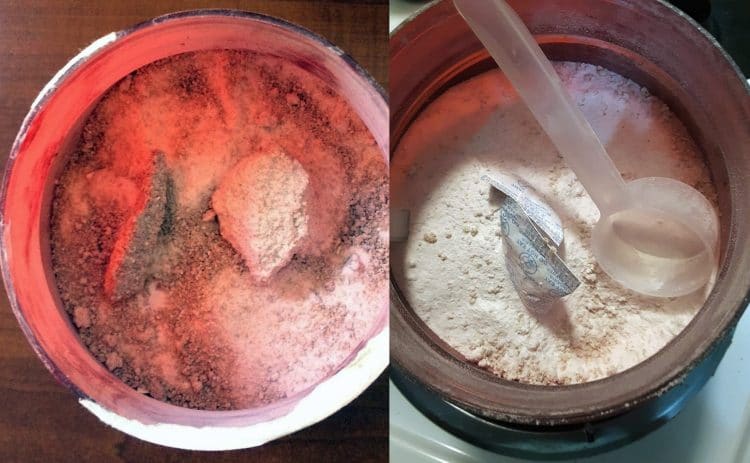
We won’t dive into the specifics of how pre-workout supplements rot, but suffice it to say, after the label has been broken and the product exposed to the environment, bacteria, mold, and yeasts in the air settle in and begin to multiply. The longer the product sits, the more these microorganisms increase until, eventually, the product is spoiled.
Now, it’s important to know that every product has its own unique rate of spoilage. Some rot faster than others. Some are made using ingredients prone to spoiling or lack quality control, which can lead to accelerated rate of deterioration.
Pre-workouts are typically made with ingredients that don’t provide a lot of nourishment to these microorganisms, so they will often take longer than other workout supplements (such as whey protein powder).
However, ultimately, they will spoil if you leave them uncovered and exposed to the air for months at a time. It’s important that you know how to spot the signs of spoilage so you can avoid taking a product that could cause you indigestion or more serious digestive problems.
3 Signs Your Pre-Workout is Definitely Off
There are a few signs that will be a clear indication that your pre-workout has gone bad—or, at the very least, is on its way to spoiling and probably should be tossed out.
Sign #1: It smells bad
Every pre-workout has its own unique flavor, based on the specific mix of ingredients used. Typically, its smell will resemble its flavor.
However, over time, the smell will change as the product ages. The longer you use the pre-workout, the more it’s exposed to air and ambient moisture, which means the more time it has to oxidize and grow microorganisms. The smell will naturally change as a result of this oxidation. But if it starts to smell bad, it’s a pretty good sign that it’s overgrowing microorganisms and has begun to spoil.
Level Up Your Fitness: Join our 💪 strong community in Fitness Volt Newsletter. Get daily inspiration, expert-backed workouts, nutrition tips, the latest in strength sports, and the support you need to reach your goals. Subscribe for free!
Sign #2: It tastes bad
This is going to be very subjective. The best time to get the “most accurate” taste is immediately after opening the pre-workout. The tubs are typically vacuum-sealed to maintain their freshness, so they’re at their freshest and “best-tasting” immediately after you break the seal for the first time.
Over the passage of days, weeks, or even months (if you don’t finish the tub quickly), the flavor will change as the oxidation process runs its course. Eventually, enough microorganisms will be produced that the pre-workout spoils. You’ll often be able to taste the change, and it will be a sign that the product is beyond its recommended period of use. Better to throw it out and get a new tub.
Sign #3: It is visibly discolored or sprouted visible mold
Crack open the lid for the first time, and the color at that moment is the “ideal” color for the powder. Over time, the color may darken or lighten as a result of oxidation (the change depends on the ingredients).
However, you can usually see when the microorganisms have grown out of control. There may be mold visibly growing on the surface of the powder or clinging to the side of the tub. Or, the powder may have simply changed color—partially or even completely.
If there is visible discoloration or the presence of mold, it’s a pretty clear sign that the pre-workout has gone bad.
2 Signs Your Pre-Workout May be Going Bad
The previously mentioned signs are very clear indicators that the pre-workout is spoiled and beyond saving. However, there are a couple of indicators that your pre-workout is GOING bad, but still usable.
These are:
Sign #1: It clumps up and/or mixes poorly
Clumps typically form in pre-workout supplements as a result of moisture being absorbed into the powder. Most tubs contain a silica gel packet to prevent precisely this problem, but they’re not a totally foolproof preventative measure. If you accidentally dripped some water in the tub or you removed the silica packet, you may find that the pre-workout becomes clumpy.
On its own, the clumpy powder is nothing to worry about. Even if you get big knuckle-sized clumps, you should still be able to mix the clumps in with water and the pre-workout will still serve your purposes adequately.
However, if the pre-workout also stops mixing well with water and it leaves thick, clumpy particles in your bottle, it’s usually a sign that the powder is on its way to spoiling. The pre-workout should easily dissolve into water like it’s manufactured to. It will only stop dissolving efficiently if it’s already over-saturated with moisture or there are microorganisms that are preventing the powder from breaking down properly.
Sign #2: It loses potency
You’re taking this pre-workout powder for a very specific reason: to give you an energy and/or concentration boost during your training sessions.
It’s normal for your body to adapt to the ingredients in the pre-workout with repeated use, so its effects will gradually lessen over time. However, pay attention to the word “gradually”. It’s a miniscule decrease—maybe 1-2% reduction over the course of a few weeks as your body grows accustomed to the stimulants or natural energy-boosters in the supplement.
But if you notice there’s a massive decrease in its effects—you’re no longer feeling an effective energy increase after taking the supplement—pay attention to how it works over the next week or two. It’s normal for there to be “off days”, days when your fatigue or something you ate or drank stops the pre-workout from working as well as it should. Over the course of 10 days, however, you’ll have a much clearer baseline as to whether or not the pre-workout is doing its job efficiently. If not, it’s usually a sign that the supplement is on its way to spoiling.
This is particularly true of a pre-workout that stops working well before its expiration date. Typically the pre-workout’s potency will decrease once it passes that “Best By” date (which is why the manufacturer included that label for your benefit). However, if the potency is decreasing before it expires, it’s usually a sign that the pre-workout is going or has gone bad.
Tips to Protect Your Pre-Workout from Going Bad
The good news is that pre-workout supplements don’t typically go bad, at least not within the time it takes the average resistance trainee to finish off the tub. If you’re taking the supplement even once a week, you’ll typically run out in 20-30 weeks. It would take a pre-workout supplement closer to 9 months to truly show signs of spoilage.
However, if you’re worried about your pre-workout going bad, there are a few simple things you can do to extend its shelf life and protect it against spoilage:
- Close the lid tightly – This is one of the best things you can do to keep your pre-workout good for as long as possible. The lids are designed to be air-tight when properly closed, so screwing it on firmly will stop any moisture from leaking in. The only time it will be exposed to moisture, air, or microorganisms is when you open it up, so the chances of spoiling are exponentially decreased. If you’re really worried, don’t throw away the seal after breaking it, but use it with the lid as a double layer of protection against spoilage.
- Keep it in a cool, dark place – Sunlight and heat accelerate the oxidation rate of pre-workout supplements and encourage the growth of bacteria and mold. To extend the pre-workout’s lifespan, store it in the back of your cupboard, well away from the heat of a window or your stove. A cool, dark place is always the best place to keep your supplements.
- Keep it away from water – Moisture will cause clumping and provide a breeding ground for mold and bacteria. Be careful not to spill any water into the tub whenever you open it, and try not to open it in a steamy shower, sauna, or anywhere with excessive moisture in the air.
- Buy a smaller size – Resist the urge to buy those “value size” tubs, especially if you’re not taking pre-workouts daily. The smaller tubs with 20-30 servings are a much better choice for occasional users, and will be less likely to spoil than the massive tubs with 80-100 servings.
- Check the expiration date – Some supplement stores will sell products close to their labeled expiration date, which means you’re taking home a product that will soon be past its “Best Before” date, so more likely to expire. Make sure to check the labels for the expiration date so you know you’re buying a good-quality product with plenty of shelf life left.
What if we mention a little about products that are close to or past their expiration date when you buy them. Some products can be bad batches/lack of quality control, recurring issues and some can even be far away from the expiration date but still be bad.
Learn more about pre-workouts:
- How to Make Your Own Pre-Workout Drink (Cheap and Easy)
- Why Does Pre-Workout Make You Itch?
- How Long Does Pre-Workout Last?
- The Must Have Nutrients Post-Workout
Top pre-workout supplement reviews:
If you want to learn more about pre-workout supplements, we have an entire pre-workout section that we recommend you check out!
- Best Pre-Workout Supplements
- Best Pre-Workouts for Weight Loss
- Best Pre-Workouts Without Creatine
- Best Tasting Pre-Workout Supplements
- Strongest Pre Workout Supplements
- Best Caffeine-Free Pre-Workout Supplements
In Conclusion
Pre-workout supplements can go bad if they’re left uncovered and exposed to air, moisture, and microorganisms for months. However, they take much longer to spoil than many other vitamins, minerals, and workout supplements.
As long as you’re using the powder regularly (at least once a week) you should never have to worry about the pre-workout going bad. But, just to be safe, make sure to take the precautions we recommended above, and you’ll protect your pre-workout supplement and extend its lifespan.

